Looking for a simple solution to prevent the tomatoes on your tomato plants from developing blossom end rot this year – and ruining your harvest in the process?
Blossom end rot can be devastating to ripening tomatoes. It first appears as a tiny, brown soft spot on the blossom end of the fruit. In the beginning, the rest of the tomato is unaffected, maintaining its usual size, shape and firmness.
But as the tomato ages, the brown spot begins to grow larger. As it does, the fruit starts to decay from the blossom end. Making matters worse, bacteria and fungi can also invade the fruit. In the end, the tomato completely rots out before it can fully mature.
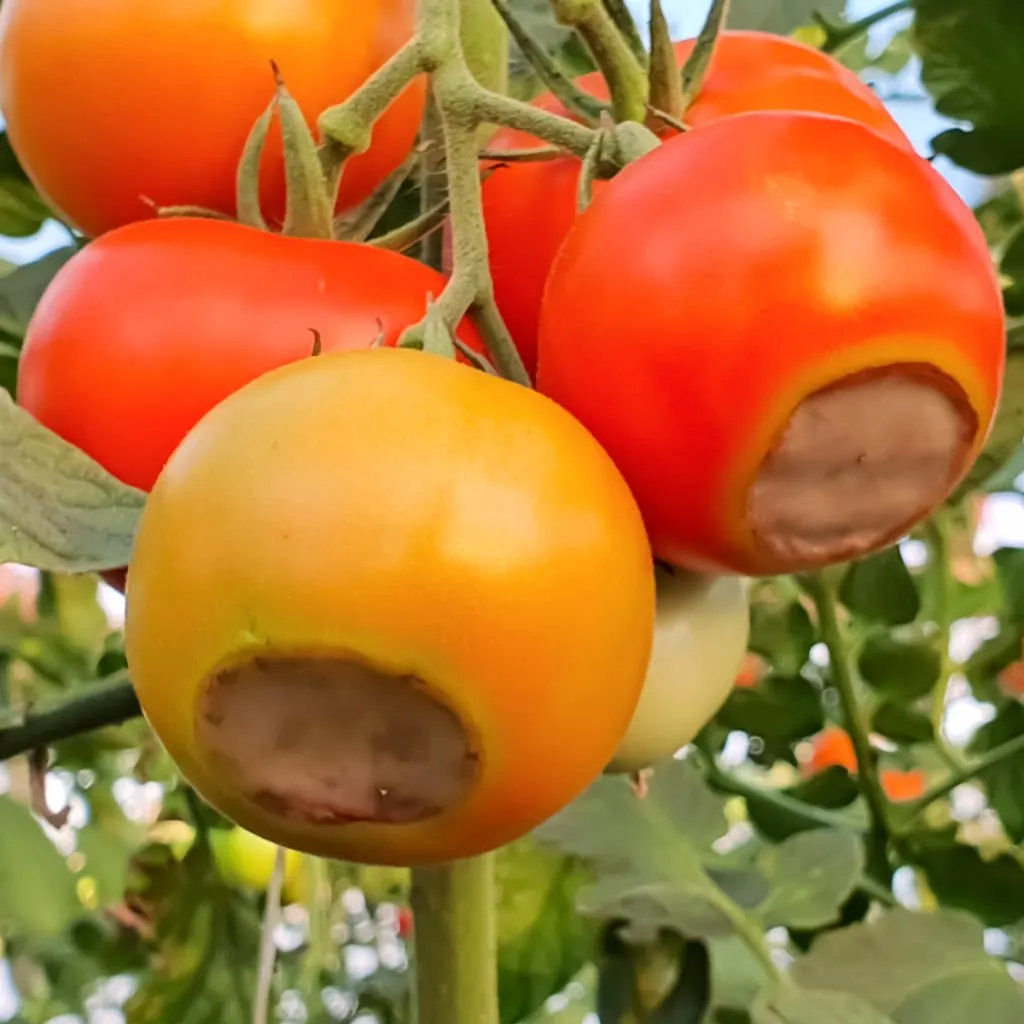
Unfortunately, when blossom end rot occurs, it not only indicates a problem with the individual fruit, but also with the overall health of the entire plant. One that if not corrected in short order can put the entire future harvest in jeopardy.
So how do you “fix” blossom end rot? Is it a disease? An infection? And more importantly, can it spread to other nearby plants in the garden and harm them as well?
As it turns out, blossom end rot is neither a disease nor an infection. And, it can’t spread to other plants either. Blossom end rot is actually caused by a nutrient deficiency in the soil, or more specifically, a lack of available calcium.
Calcium’s Role In Plant Health – How To Prevent Blossom End Rot
When it comes to tomato plants growing strong, healthy and productive, calcium is one of the most vital nutrients of all. When first starting out, young tomato plants need calcium to produce strong cell walls for thick stems and branches.
As they continue to grow, tomato plants also need calcium to pull in moisture and help with pollination. And last but not least, the plants need calcium to form healthy fruit. And without enough – blossom end rot occurs.
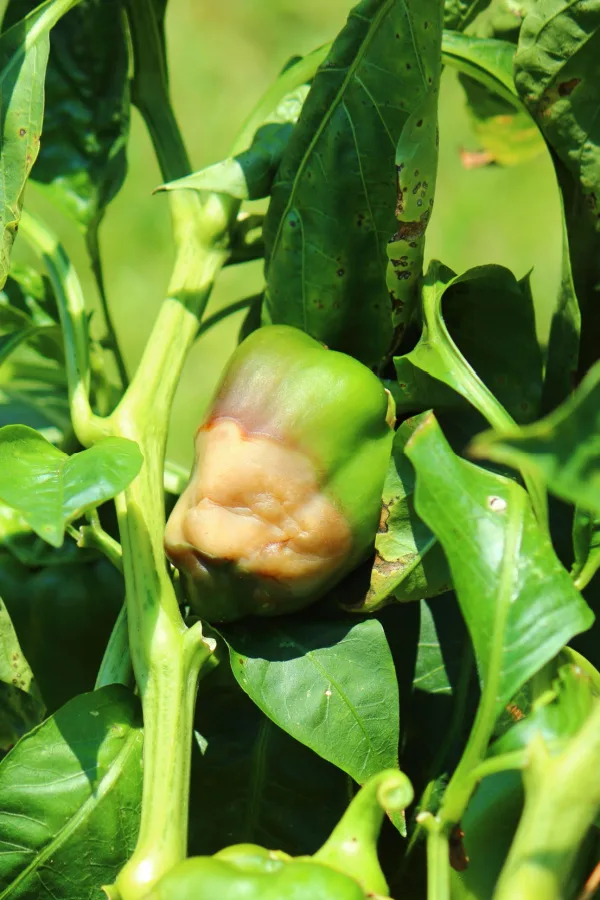
How To Prevent Blossom End Rot – 2 Simple Secrets To Success!
While it is most often associated with tomato plants, blossom end rot can also appear in other vegetable plants as well. Pepper plants, eggplant, and even summer and winter squash plants can all end up with symptoms of blossom end rot.
Although the core issue is a lack of calcium, why the plant isn’t absorbing enough can actually be caused by two separate issues. The first, and usually most common, is that your soil simply doesn’t have enough calcium in it.
The second reason it can occur is that your plants are simply unable to absorb the calcium that is in the soil. As you will see later, that is most often due to how a plant is watered.
Here’s the good news – both are easy to fix. And in short order. Even better, they are also both easy to prevent as well. With that in mind – here is a look at how to make sure your soil has enough calcium to grow great tomatoes – and how to make sure your tomato plants can soak up all of that calcium too!
Conserving Calcium In The Soil – How To Prevent Blossom End Rot
As we will cover in a moment, there are several ways to help replenish calcium in the soil. But in addition to adding more calcium, it’s also important to help conserve the calcium already in it. And the best way to do that is by rotating where you grow your tomatoes each year.

Tomatoes are heavy feeders that require and consume large amounts of calcium when growing and producing blooms. If you plant your tomatoes in the same space for multiple years, it will eventually use up the available calcium. Especially if you are not helping to replace it.
To help prevent a constant drain on the nutrient, practicing crop rotation each year is a must. For this, it’s best to avoid planting tomatoes in the same space for at least three years. And if you grow tomatoes in containers, you need to replace the soil every growing season. (See, “How To Rotate Garden Crops – And Why It’s So Important For Your Plants!”)
Using Egg Shell Powder To Add Calcium To Your Soil – How To Prevent Blossom End Rot
Along with using crop rotation to keep calcium levels from draining away, you can also add more to the soil to help recharge it. And the best and easiest way to do that is with egg shell powder.
Egg shells are full of calcium. In fact, almost 95% of an eggshell is made up of calcium carbonate! Even better, they also contain other key trace elements that tomatoes need to thrive as well. As eggshells decompose in the soil, they break down and release calcium and all of their trace elements into the soil.
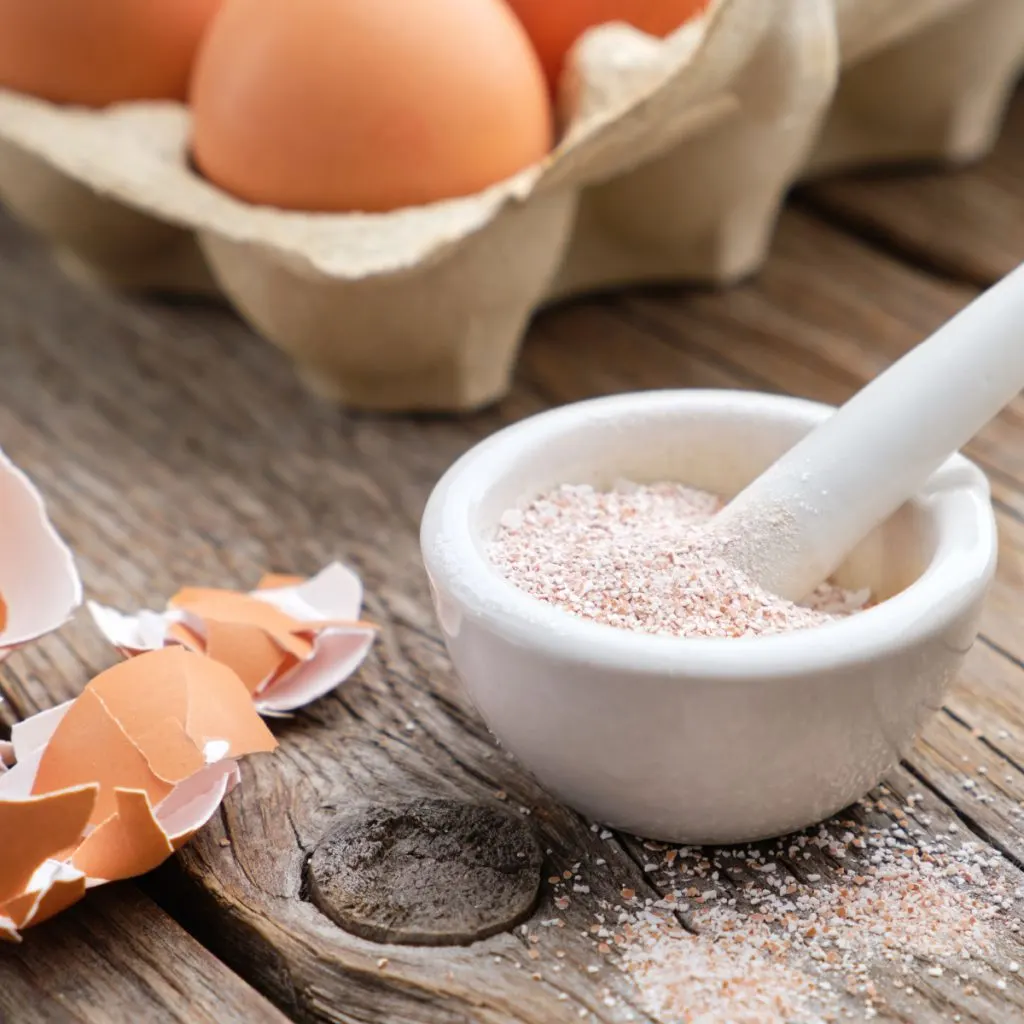
But there is a catch for how to use them correctly. Whole or large pieces of shells can take months and months to break down in the soil. But by using a food processor or coffee grinder, you can break down the shells into a fine powder, which plants can easily absorb. (Affiliate Product Link: Hamilton Beach Coffee Grinder)
How To Add Egg Shell Powder To The Soil
To improve the calcium in your soil, simply add 2 to 3 tablespoons of powdered egg shells when you plant. Drop the powder directly into each planting hole before you place your tomato transplant inside. Backfill and water as usual.
You can also sprinkle a few tablespoons of egg shell powder around the root zone of each tomato plant. Every time it rains or you water your plants, the nutrients from the shell powder will slowly leach in and be absorbed by the roots.
Together, along with crop rotation, the one-two punch of egg shell powder in the planting hole and on the soil surface around the plant can do wonders to prevent blossom end rot. That is, if the roots of your plants can absorb it. And to make sure of that – it’s all about the water your plants are getting!
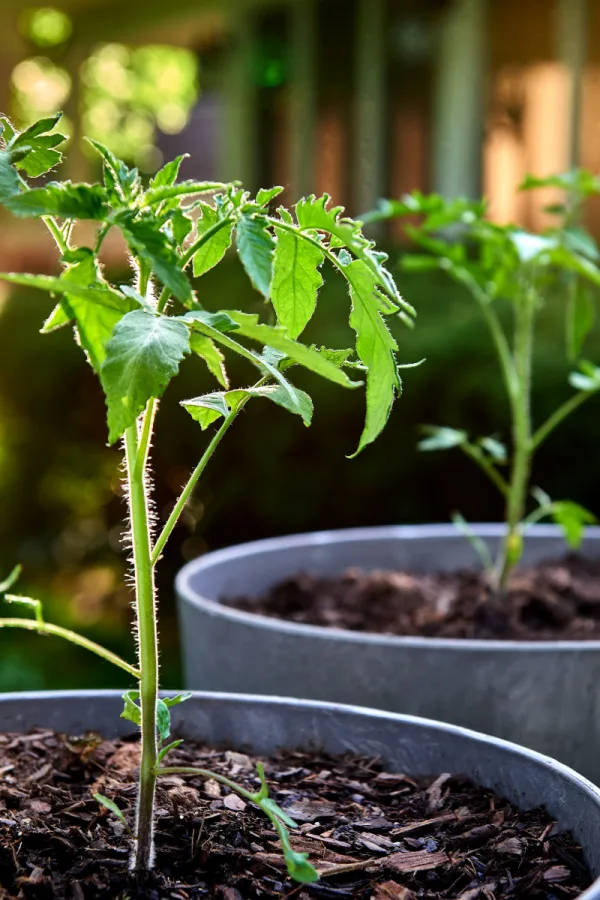
Watering Tomato Plants For Success – Preventing Blossom End Rot
Quite often, there can be plenty of calcium in the soil but your tomato plants can’t soak it up. And the culprit is that the plant’s roots are simply too wet – or too dry! Tomato plants require around 1 to 1.5 inches of rainfall or hand watering weekly. But if plants receive way more than that – or way less, it can render them unable to absorb the calcium they need.
When the roots of a tomato plant become overly dry, they shrivel. And when they do, they lose their ability to soak up nutrients – including calcium.
But when it comes to a plant not being able to obtain calcium from the soil, it’s usually over watering that is a bigger issue than underwatering. When a plant’s roots become saturated and soggy, they swell. Unfortunately, when this happens they can’t absorb anything at all, including calcium, and the plant suffers.
How To Know If Your Plants Need Water – How To Prevent Blossom End Rot
It’s important to not only look at the soil surface to determine if your plants need water. What really matters is the moisture level a few inches down at the root level.
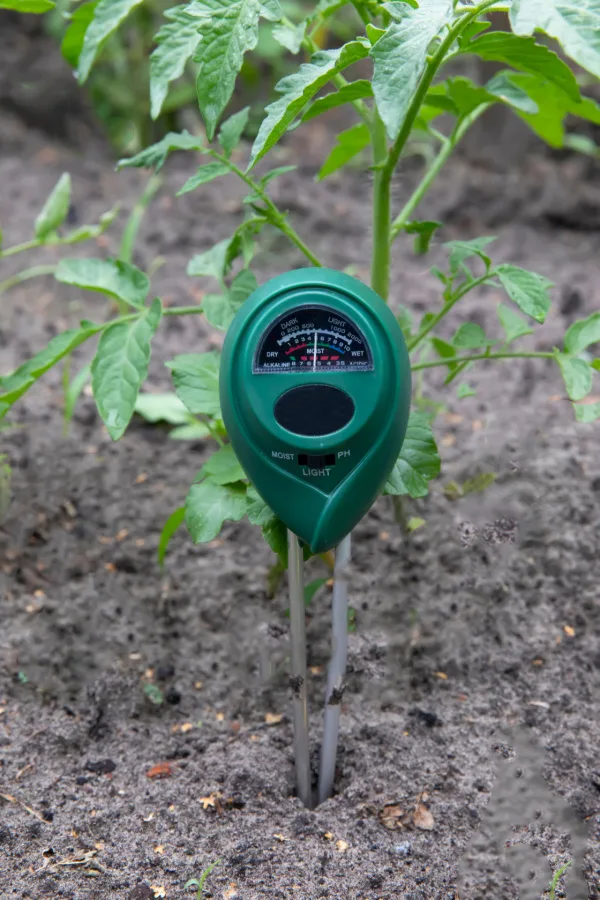
The best way to find out the moisture in your soil a few inches down is with an instant read soil moisture probe. These inexpensive devices can show you immediately the moisture levels in the soil deep below the surface. (Affiliate Product Link: Soil Moisture Probe)
Watering For Success
If there is plenty of moisture, hold off on watering. If not, it’s time to water. But when you water, how you do it really does matter.
When watering tomato (and pepper) plants, water them slowly and deeply at the base of the plants. Avoid watering every day with just a little bit of water. Instead, give plants a good, deep drink only once or twice a week.
One last note on the first few tomatoes that form on your plants. Quite often, the initial fruit of tomatoes will exhibit signs of blossom end rot. This is typically the plant simply adjusting to producing fruit. It doesn’t indicate any real issues with calcium deficiency.
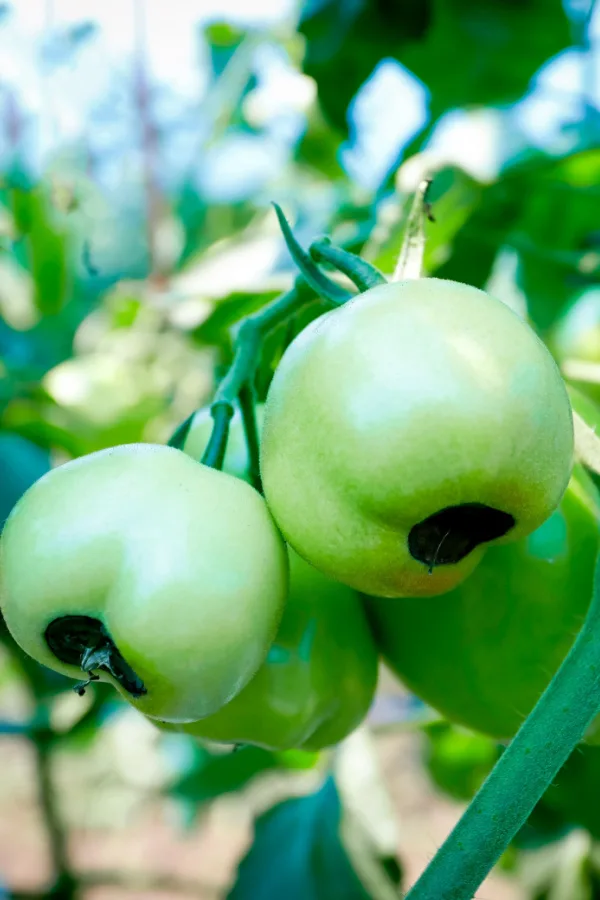
Simply remove those first few tomatoes from the vine. If you continue to see the issue through the second or third week, then you need to start suspecting a calcium deficiency. Here is to keeping blossom end rot from hurting your tomato plants and yields this year!
Simple Garden Life
Follow Our Facebook Page For Even More Great Tips! Simple Garden Life Facebook Page
Simple Garden Life is a website dedicated to keeping gardening fun, simple and enjoyable! We publish two new articles each week along with a new garden podcast episode every two weeks. This article may contain affiliate links.
